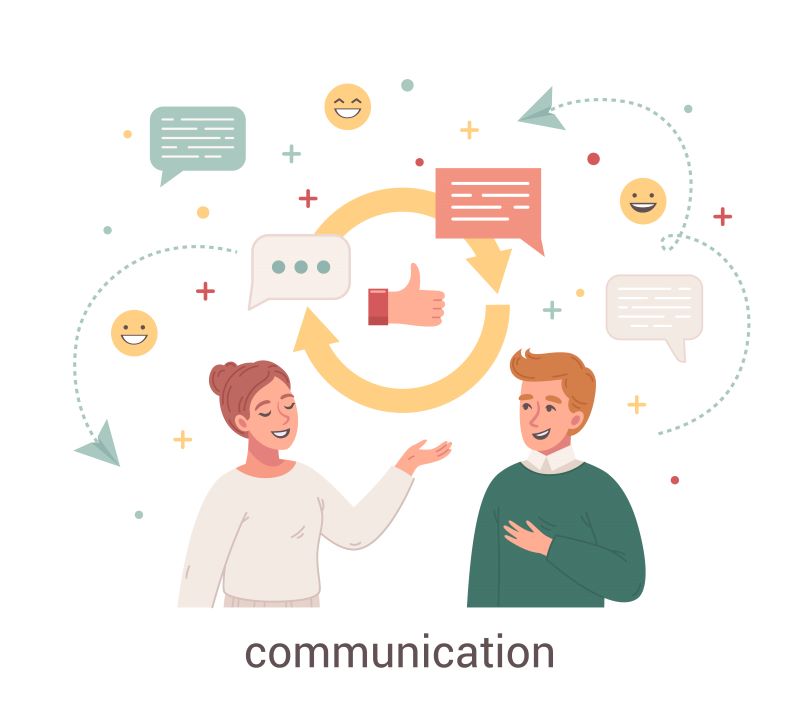Feedback in Communication Vs Criticism
Successful business operations depend on effective communication since it fosters organisational growth and personal development. Within this complex communication framework, feedback is essential. This lengthy blog explores the dynamic interplay between criticism and feedback, highlighting the importance of clear business communication. We will examine the subtle differences between verbal and nonverbal modes of communication as well as mass communication, and we’ll talk about how feedback affects communication abilities. Practical examples, data, and research from India will offer insightful information about how constructive criticism may improve and mold communication.
The Crucial Role of Effective Feedback in Communication
The skill of precisely and clearly expressing thoughts, ideas, and information is known as effective communication. It serves as the binding agent between groups of people, companies, and society, promoting communication and cooperation.

Types of Feedback in Communication:
- Verbal Communication:
Verbal communication encompasses the exchange of spoken words, whether conducted in person or via digital platforms.
- Non-Verbal Communication:
Body language, facial expressions, and tone of voice are examples of nonverbal signals that have a substantial effect on the interpretation of messages.
- Mass Communication:
Mass communication entails disseminating information to a wide-ranging audience via mass communication channels such as radio, television, and social media.
Feedback in Communication: A Catalyst for Improvement
Feedback is a dynamic process that people or groups use to communicate their responses, ideas, and information. It acts as a catalyst for improving performance, changing behaviour, and encouraging teamwork. Feedback provides clarification, affirmation, and helpful criticism on a range of communication-related topics, such as the efficacy and clarity of messages, as well as verbal and nonverbal abilities.
The Fine Line Between Feedback and Criticism
- Understanding Criticism:
In contrast to feedback, criticism is frequently marked by a tone that is more pessimistic and critical in nature. Generally, it emphasises deficiencies, errors, or shortcomings without providing solutions or motivation for enhancement.
- Feedback Communication Definition:
It refers to the procedure of offering input regarding the performance and conduct of communication, with the aim of improving it and ensuring that it remains in line with the objectives of the organization.
Positive Feedback Communication
A valuable instrument for reinforcing desired behaviors and communication skills is positive feedback. The approach emphasizes accomplishments and strengths, thereby inspiring people to sustain their constructive contributions.
Positive Feedback Communication Examples
- Appraisal and Recognition:
This is frequently utilized in business settings to recognize and promote exceptional communication skills and accomplishments during performance reviews and recognition programmes.
- Team Collaboration:
It is extremely beneficial to teams because it promotes a culture of trust, cooperation, and efficient communication. Collaboration is improved when team members’ efforts are acknowledged and valued.
Positive Feedback on Communication Skills:
- Enhancing Public Speaking:
Offering encouragement to a worker who has become more proficient in public speaking might help them feel more confident and motivated to keep improving.
- Effective Presentation:
Positive comments regarding a presentation’s impact and clarity might inspire people to improve their communication abilities even more.
Barriers to Effective Feedback:
- Fear of Conflict:
A great number of people refrain from offering feedback for fear of provoking discord or harming interpersonal connections.
- Lack of Skill:
Effective feedback provision is a potential skill that could benefit from additional instruction and honing. Numerous individuals are unprepared to provide constructive feedback.
Building a Feedback Culture:
- Feedback Training:
Companies might spend money on training initiatives that give staff members the abilities to give and receive feedback in an efficient manner.
- Continuous Improvement:
Fostering a continuous feedback culture facilitates individual and team adaptation to shifting demands.
Real-World Examples from India
- Tata Group:
The Tata Group, emphasizes feedback and efficient communication. They promote candid and fruitful communication through a variety of platforms, such as town hall meetings and leadership initiatives.
- Infosys:
One of the main tenets of Infosys’ work culture is feedback, which is integrated throughout the company’s operations worldwide. They have implemented programmes like the “Leadership Institute” to improve their staff members’ ability to communicate effectively.
- Indian Startups:
From the beginning, many Indian startups place a high value on feedback and efficient communication. They are aware that development depends on fostering an environment of transparency and ongoing improvement.

Research and Statistics from India:
A National Association of Software and Service Companies (NASSCOM) survey found that successful feedback and communication are essential for success in India’s IT and software services sector. Teams with effective feedback and communication procedures routinely outperformed their peers, according to the study.
Conclusion
The key to a productive and peaceful workplace is open lines of effective communication and constructive feedback. Fostering an open culture of feedback and constructive criticism adds to overall success and employee satisfaction in the context of the Indian business scene, as evidenced by real-world examples from prominent organizations and research data.
Find Your Dream Job: Explore DEIJobs for diverse opportunities today!
In a world that’s increasingly embracing diversity and inclusivity, DeiJobs emerges as India’s pioneering platform dedicated to fostering connections between diverse job seekers and inclusive employers.


